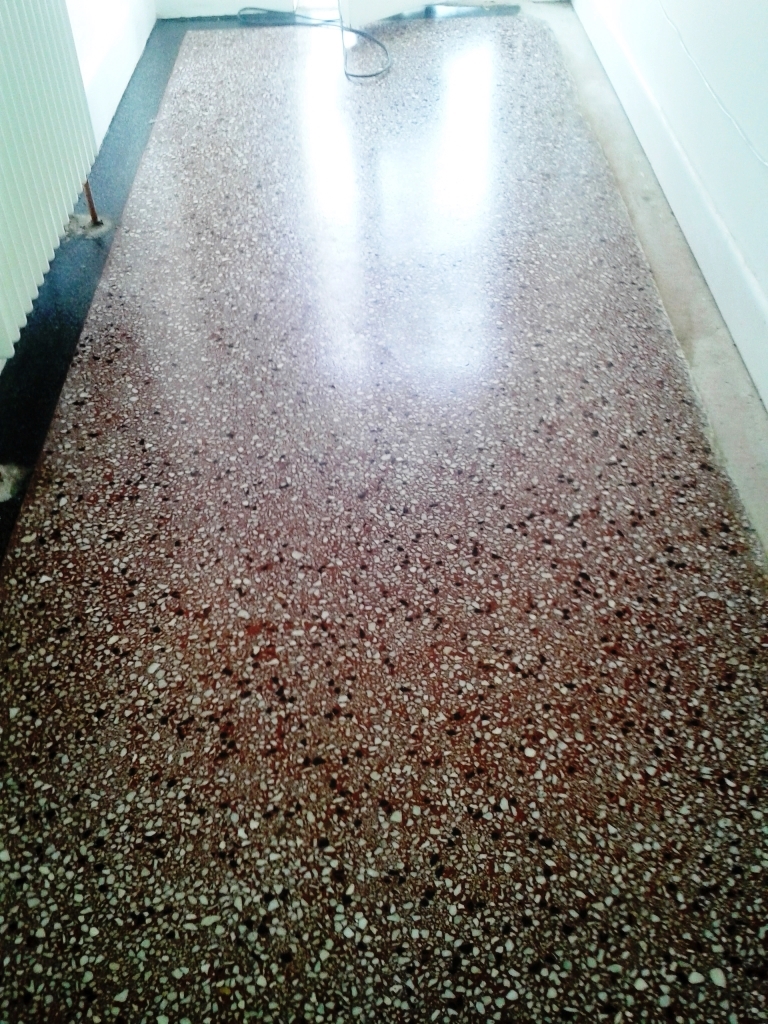Restoring a Cracked Terrazzo Porch Floor in Bournemouth
The pictures below are of a weathered Terrazzo floor laid in the open porch of a house in Bournemouth. Being exposed to the elements the Terrazzo was dull with ingrained dirt and unfortunately a few cracks had developed.

Unhappy with its appearance the owner felt it was time for a refresh and contacted Tile Doctor to see what could be done. We discussed the project over the phone and shared a few images over email. Restoring the appearance of the Terrazzo wouldn’t be an issue however I was concerned about the cracks so I arranged a time to visit the property so I could understand the extent of the issues in detail.

Whilst at the property I was able to confirm that the cracks were not that deep and came up with a restoration plan that would completely renovate the patio. I was able to use this to create an accurate quote for the work which was accepted and a date set on the proviso off good weather.
Cleaning a Terrazzo Tiled Porch Floor
Thankfully the weather was good and I was able to move straight onto burnishing the Terrazzo with a set of 17-inch diamond burnishing pads worked in with water. The first pad in the sequence is a coarse 400-grit which grinds off the dirt and is the first step in refining the appearance of the stone and aggregate. The process generates a fair amount of slurry in the process which is then rinsed away with more water and extracted with a wet vacuum.
The fine cracks in the Terrazzo were then filled using a flexible grout in a similar colour to the Terrazzo. Once that had dried the burnishing process was repeated using a medium 800-grit and then fine 1500-grit burnishing pad, rinsing and extracted after each pad. The last pad in the sequence is a super fine 3500-grit pad that is applied dry with only a little water sprayed onto the surface.
Sealing a Terrazzo Porch Floor
First, I checked the floor had dried out with a moisture meter, it was within the acceptable levels, so had the green light to processed and seal the Terrazzo. For this a couple of coats of Tile Doctor Ultra Seal were applied which is an impregnating natural look sealer that provides durable protection to the surface as well as allowing the floor to breath.
 |
 |
Once I had finished it looked like a new installation and my client was very pleased with the result. Before leaving I took time to discuss aftercare and the importance of protecting the sealer from strong cleaning products that could damage it. For sealed and polished stone, I recommend using Tile Doctor Stone Soap, it’s a mild yet effective cleaning product that will help maintain the patina.
Professional Restoration of a Terrazzo Tiled Porch in Dorset
Restoring a Cracked Terrazzo Porch Floor in Bournemouth Read More »




